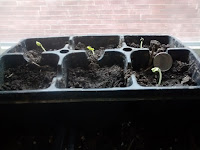While taking the Health Assesment Webinar presented by CLU-IN today I was referred to Phytotechnology Technical and Regulatory
Guidance and Decision Trees, Revised
I was pleasantly surprised to see the plan I have been working on meets the criteria. Without knowing all the fancy words such as: phytotechnologies that will both contain and remediate the soil and water toxins.
The MOhemp Hazmat crew is currently
Testing and experimenting on and for numerous things that deal with removing heavy metals from the soil. The basis for the experiment is Phytoremediation by Phytorextraction.The MOhemp Hazmat testing team consists of
- David who has a proven way to increase plant growth through Electro-horticulture. [ Learn about nature's secrets for increasing yields, accelerating growth, and protecting against droughts and other calamities. Buy now to learn the history and science behind electroculture, uses & novel applications, and more! ] order the Electro-Horticulture book by David J. Wechsler https://leanpub.com/ElectricFertilizerBook
- Scotty, MOhemp Energy theory that: Electro-culture which is also called electro-horticulture will draw more toxins to the roots of a Kenaf Plant that can then cycle the toxins from the soil by Phytoextraction.

- By using the combined approach of phytoremediation. MOhemp Hazmat team believes we can speed up the toxic uptake of the heavy metal toxins. Read additional details
- Kenaf Phytoremediation Heavy Metal Experiment Planned in St Louis http://blog.mohempenergy.org/2016/01/kenaf-phytoremediation-heavy-metal.html
CLU-IN suggested this information,
notice that my plans adhere to their
guidenace minus the trees
Phytotechnology Technical and Regulatory Guidance and Decision Trees
To enhance the phytoextraction capabilities, several strategies have been attempted. Lead can be made much more bioavailable with the addition of chelating agents such as ethylene diamine tetra-acetic acid (EDTA) to soils (Schnoor 1997). Similarly, a considerable body of information exists on the uptake of radionuclides into plants, including laboratory and field studies where radionuclides from nuclear weapons complexes or test sites have been transferred into plants. Specifically, the availability of uranium and radio-cesium 137 has been enhanced using citric acid and ammonium nitrate, respectively (Dodge and Francis 1997, Riesen and Bruner 1996). However, adding these enhancing agents also increases the inherent risks associated with the application since they can also mobilize target contaminants and other constituents deeper into the soil or into groundwater. This is a decision factor to consider when selecting this phytotechnology application as the site remedy (see Section 2.3). Furthermore, the timing of the application should be thoroughly designed, planned, and managed during implementation (see Section 2.4). [Phytotechnology Technical and Regulatory Guidance and Decision
Trees, Revised pg 40]
The applications of phytotechnologies that combine containment with remediation include covers
that stabilize soils and phytoremediate contaminants, tree stands that create a hydraulic barrier
while remediating impacted soil and groundwater, constructed wetland treatment systems, and
riparian buffers.[Phytotechnology Technical and Regulatory Guidance and Decision
Trees, Revised pg 36]

